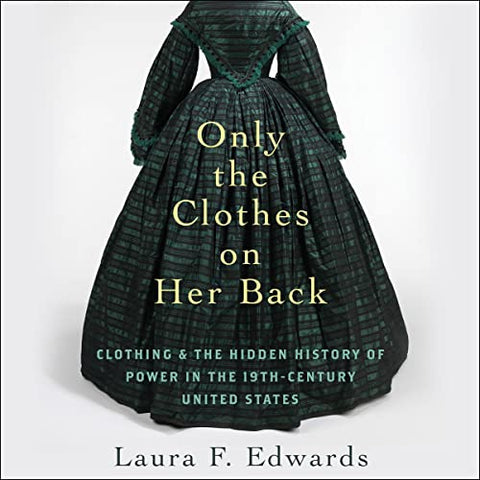
Book Review: “Only the Clothes on Her Back”
In “Only the Clothes on Her Back,” historian and Princeton University professor Laura F. Edwards explores the secret power that cloth, the ability to make it and the possession of it had for marginalized figures — primarily women and slaves. Before the Civil War, all kinds of textiles, from bedding, tablecloths and curtains to rags, endowed those who made and possessed such items, even servants, legal claim to such goods as property, entitling the bearers to participate, albeit in an extremely limited way, in the American legal system. A runaway slave could not claim to own her own body, but she could argue she owned the clothes on her back.
Edwards thoroughly explains how after the Revolution the law connected clothing to the person who wore or produced it. Enslaved people and married women could make legal claims to clothing they fashioned, although at the time marriage and bondage each in its way limited an individual’s rights to other forms of property. The relationship of person to clothing was so strong as to extend to hats, shoes and other accessories, as well as to uncut bolts of cloth not meant to be worn. The book explores the nature of textiles in these contexts much more broadly and interestingly than the wording of its title and its cover image suggest.
GET HISTORY 'S GREATEST TALES—RIGHT IN YOUR INBOX
Subscribe to our Historynet Now! newsletter for the best of the past, delivered every Wednesday.
Close
Thank you for subscribing!
Submit
Standard census forms did not record commercial activity by women and slaves. To document her case, Edwards pulls from diaries and personal records of everyday individuals, making clear how people without any other power still were able to use textiles as forms of currency or credit. A poor woman could live by her needle, while middle- and upper-class wives could trade textiles they wove, knitted, purchased or were given. Enterprising individuals might make a business out of fabricating and selling fabric.
When textiles were stolen or customers failed to pay, women and slaves could go to court and argue their rights to the material as personal property. Lacking as they did the formal rights accorded white men, they could never expect to have all their claims honored. Yet by appearing in court, women and slaves could stretch the social fabric to include themselves in the American economy and the legal system, even before the Civil War. Once the Industrial Revolution automated weaving, however, textiles became cheaper, altering the property rights attached to them.
“Only the Clothes on Her Back” will interest readers wanting a thoroughly researched examination of how women and people of color were able to find limited property ownership and economic agency in an early American legal system that denied them most other basic rights.
_Michelle Mastro writes about material culture, especially in the home and other domestic spaces, contemporary and historical. _
historynet magazines
Our 9 best-selling history titles feature in-depth storytelling and iconic imagery to engage and inform on the people, the wars, and the events that shaped America and the world.
(American History magazine February
2022 cover)American History magazine February 2022 cover
(America's Civil War magazine January 2022
cover)America's Civil War magazine January 2022 cover
(Aviation History magazine January 2022
cover)Aviation History magazine January 2022 cover
(Civil War Times magazine February 2022 cover)Civil
War Times magazine February 2022 cover
(Military History magazine
January 2022 cover)Military History magazine January 2022 cover
(Military History Quarterly magazine winter 2022
cover)Military History Quarterly magazine winter 2022 cover
(Vietnam magazine February 2022 cover)Vietnam
magazine February 2022 cover
(World War II magazine February 2022
cover)World War II magazine February 2022 cover
(Wild West magazine February 2022
cover)Wild West magazine February 2022 cover
